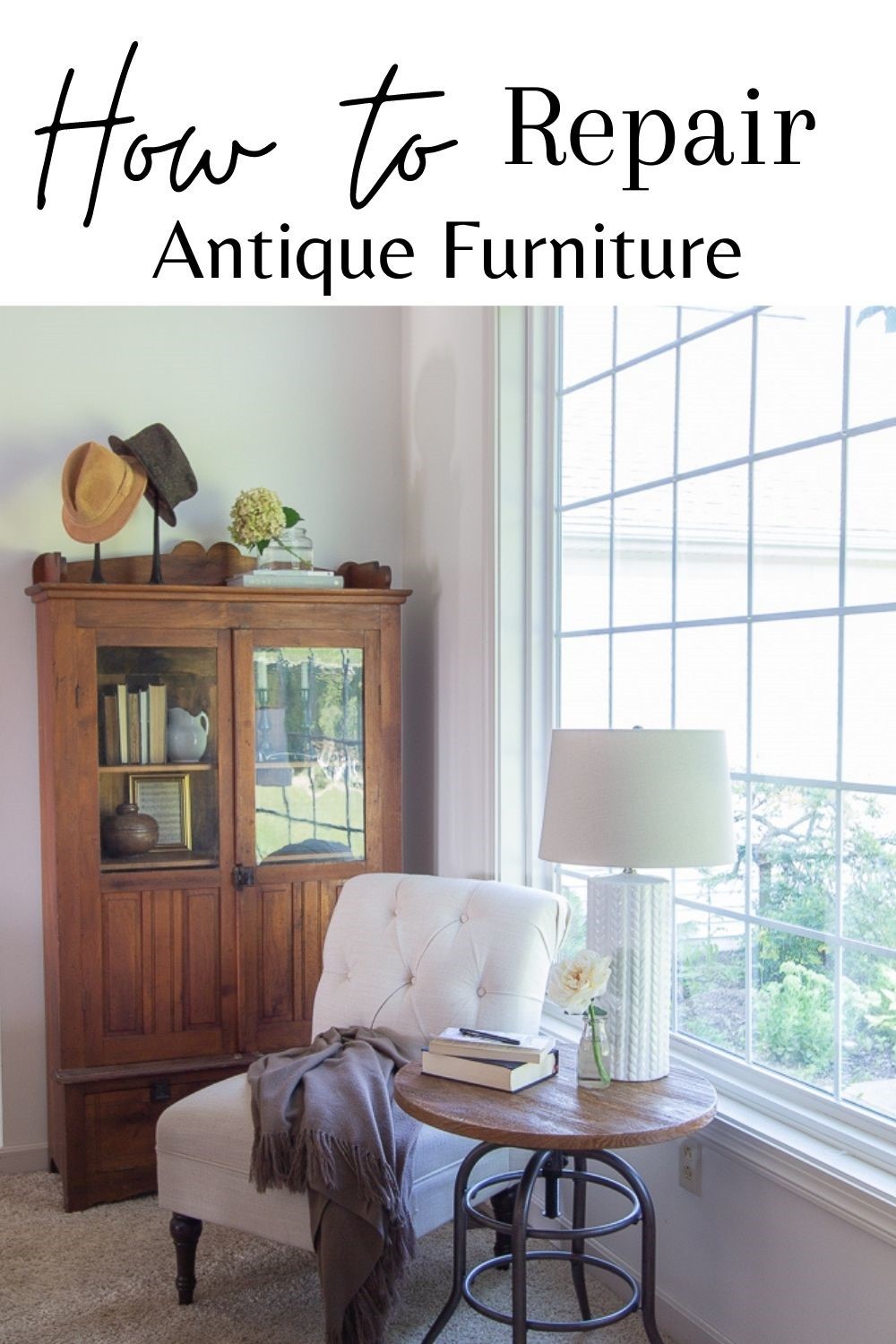Discovering a piece of early 1900s furniture is like finding a treasure. These items, often crafted with care and unique designs, add character and history to any home. However, age and moves can sometimes lead to damage. You might think repairing antique furniture is a daunting task, but with the right approach, it can be surprisingly straightforward. We recently faced this situation ourselves when we acquired a beautiful cabinet believed to be from the early 1900s, only to have a door crack during transport. What seemed like a disaster turned into a satisfying DIY project, proving that you too can easily repair your cherished early 1900s furniture at home.
Our Early 1900s Cabinet Story
Amidst the excitement of preparing our home for a new family member, we stumbled upon the perfect piece to refresh our bedroom décor – an exquisite cabinet from a local vintage shop. Its aged charm and classic design instantly captured our hearts. The shop owner, estimating its origins to the early 1900s, highlighted its remarkable condition for its age. We were thrilled!
Bringing it home was an adventure in itself. My husband and I were so eager, perhaps a little too eager. Despite carefully latching the doors, as we maneuvered the cabinet out of the shop, disaster struck – a door swung open and cracked. My initial dismay was quickly replaced by determination. This beautiful piece was destined for our home, and a little crack wasn’t going to stop us. My husband, ever the optimist, assured me we could fix it, and he was absolutely right.
This incident turned into a mini DIY project, and we’re excited to share how we easily repaired our early 1900s cabinet, proving that you don’t need to be a professional to restore the beauty of your vintage finds. This simple repair kept our bedroom refresh plans on track and gave us a deeper appreciation for the piece.
Understanding Early 1900s Furniture
Furniture from the early 1900s often showcases craftsmanship from the late Victorian era and the emerging Arts and Crafts movement, transitioning into styles like Art Nouveau and early Art Deco. Common materials included solid woods like oak, mahogany, and walnut, often featuring intricate details and sturdy construction. While durable, over time, these pieces can experience common issues such as loose joints, veneer damage, scratches, and, like our cabinet, cracked or broken elements. Understanding the age and typical construction of early 1900s furniture helps in choosing appropriate repair methods and maintaining its historical integrity.
Supplies for Repairing Early 1900s Furniture
Fortunately, repairing minor damage to early 1900s furniture doesn’t require a vast toolkit or specialized skills. For our cabinet door repair, we used just a few readily available items:
- Wood Glue: Essential for re-attaching broken wood pieces. We recommend a high-quality wood glue that dries strong and clear.
- Clamps: To hold the broken pieces firmly together while the glue dries, ensuring a tight bond. Various sizes and types of clamps are available; bar clamps or pipe clamps work well for furniture repair.
- Parchment or Freezer Paper: To prevent excess glue from sticking to the clamps or furniture finish.
- Wood Fill Stick: To fill in any cracks or gaps after gluing. Choose a color that closely matches your furniture’s wood tone.
- Clean Rag: For wiping away excess glue and applying scratch cover.
- Old English Scratch Cover: To blend repairs and restore the wood’s finish, minimizing the appearance of scratches and imperfections.
Step-by-Step Guide to Repairing Your Early 1900s Cabinet Door
Follow these simple steps to repair minor damage to your early 1900s furniture, just as we did with our cabinet door:
Step 1: Applying Wood Glue
The first step is to carefully apply wood glue to the broken edges of the wood. Ensure both the broken piece and the area on the cabinet where it will be reattached are coated. Use a small brush or even a cotton swab to spread the glue evenly into all cracks and crevices, ensuring maximum contact for a strong bond.
Step 2: Clamping the Broken Piece
Carefully align the broken piece back into its original position. To protect the furniture’s finish from the clamps and any glue squeeze-out, place a layer of parchment or freezer paper over the glued area. For added protection and even pressure distribution, you can also use small pieces of scrap wood between the paper and the clamps.
Apply clamps firmly, but not so tightly that you cause further damage. Follow the wood glue’s instructions for drying time – usually, several hours or overnight is recommended for a secure bond.
Once the recommended drying time has passed, carefully remove the clamps and parchment paper. Wipe away any excess glue that may have squeezed out before it fully hardens.
Step 3: Filling the Crack
After the broken piece is securely reattached, you might be left with a visible crack. To address this without needing to refinish the entire piece, a wood fill stick is an excellent solution. Select a wood fill stick that closely matches the color of your furniture.
Work the fill stick into the crack, applying gentle pressure to ensure it fills the gap completely. Once filled, use a clean, dry rag to gently rub along the filled crack. This helps to blend the wood filler with the surrounding wood and remove any excess.
Step 4: Scratch Cover and Finishing Touches
Often, wood fill sticks can leave a slightly glossier finish than the original furniture. To even out the finish and further conceal the repair, we used Old English Scratch Cover. This product helps to blend the repaired area seamlessly with the rest of the furniture.
Apply a small amount of scratch cover to a clean rag and gently rub it over the filled crack and the surrounding area. This will help to reduce the glossiness of the filler and enhance the overall finish, making the repair less noticeable.
Maintaining Your Repaired Early 1900s Furniture
Once your repair is complete, proper maintenance will help preserve your early 1900s furniture for years to come. Regular dusting with a soft cloth and occasional polishing with a furniture polish formulated for antique wood will keep it looking its best. Avoid placing antique furniture in direct sunlight or areas with high humidity, as these conditions can damage the wood and finish over time.
Enjoying the Beauty and Story of Repaired Antique Furniture
Our DIY repair of the early 1900s cabinet door was a success! The crack is barely noticeable, and the cabinet is ready to become a beautiful and functional part of our bedroom. What started as a mishap turned into a rewarding experience, giving us a greater appreciation for the piece and the satisfaction of restoring a bit of history.
Just like every scratch and mark on antique furniture tells a story, our little repair adds to the cabinet’s unique narrative. These imperfections are part of its charm, reminding us of the past and the journey of these timeless pieces. Repairing your early 1900s furniture is not just about fixing damage; it’s about preserving history and adding your own chapter to its story. So, embrace the DIY approach and bring back the beauty of your vintage treasures!


